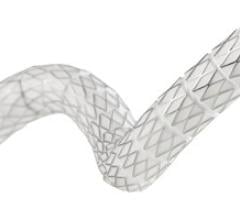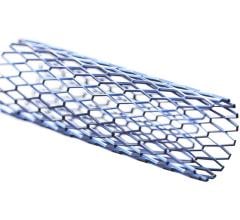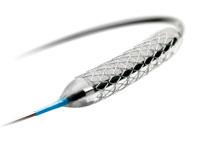
Medtronic has introduced a new stent platform called Integrity, which is made of a cobalt alloy and utilizes sinusoid technology to make each stent from one continuous wire. It is extremely flexible, even in tortuous vessels.
Navigating through the world of coronary stents is about to become more complex. A plethora of new products are on the horizon, which will utilize new platforms and alloys and present novel options in polymer technology. Whilst most of the new stents will upgrade the platform and polymer, the choice of drug is not changing in most cases. This new generation of drug-eluting stents (DES) promises increased deliverability and radial strength in the platform. New polymers will minimize the concerns around late stent thrombosis (LST) and the need for long-term dual antiplatelet therapy (DAPT). A bioresorbable drug-eluting scaffold also may be game changer in the treatment of coronary artery disease.
Platform Technology
Platinum chromium (PtCr) is the newest alloy to be used in coronary stents, and may be found in Boston Scientific’s Element family of stents. The Element stent platform was first introduced by Boston Scientific with the launch of Promus Element in late 2009, and subsequently with the launch of Taxus Element in May 2010. The PtCr alloy and thin-strut design has resulted in a highly radiopaque, flexible stent with reduced incidence of recoil and improved radial strength compared with other leading stents.
At the American College of Cardiology (ACC) Annual Scientific Sessions in April, Boston Scientific presented clinical trial results for both the Promus Element (everolimus-eluting) and Taxus Element (paclitaxel-eluting) stents, which supported the ,company’s claims to excellent radiopacity and deliverability. The PLATINUM trial, which has enrolled 1,800 patients to compare the effectiveness of Promus Element and Promus in workhorse lesions, reported 12-month clinical results that show comparable safety and effectiveness between the two stents. However, the Promus Element was shown to have statistically significant lower rates of unplanned (bailout or emergency) stenting, and a lower incidence of geographic miss as a result of the opaque nature of the Promus Element.
Similarly, Boston Scientific announced that the Taxus Element, branded as the Ion stent in the United States, shows statistically significant improved patient outcomes over the Taxus Liberté stent. Lower rates of myocardial infarction (MI), major adverse cardiac events (MACE) and target lesion failure (TLF) for Ion were attributed to the Element platform Ion, since the same polymer and paclitaxel drug is used in both stents. The Ion stent received U.S. Food and Drug Administration (FDA) approval and had a U.S. launch in June.
Other changes in platform include Abbott’s Multi-Link 8 bare metal stent, which is the platform for its next-generation everolimus-eluting Xience Prime stent. Multi-Link 8 and Xience Prime have been available in Europe since 2010 and 2009, respectively, and are expected to launch in the United States in mid-2012. The Multi-Link 8 stent platform is made of a cobalt chromium (CoCr) alloy and boasts superior deliverability to the Multi-Link Vision stent through several changes to the delivery system.
The Xience Prime everolimus-eluting stent has been sold in Europe since 2009 and was quickly adopted as one of the leading brands. Xience Prime uses the same drug and polymer as Xience V, with the key difference being that Xience Prime uses the new Multi-Link 8 platform, while Xience V uses the Multi-Link Vision platform.
Xience V has been tested in trials worldwide and is now the reference stent for coronary stent clinical trials. The SPIRIT PRIME is underway and will be used to file for FDA approval of Xience Prime. Pending approval, the device could be launched in the United States in 2012.
Medtronic has introduced a new stent platform called Integrity, which is made of a cobalt alloy and utilizes sinusoid technology to make each stent from one continuous wire. The Integrity stent design resembles a Slinky or a spring, resulting in an extremely flexible and high performing stent, even in tortuous vessels. Integrity has been available in Europe since early 2010 and has been rapidly adopted in the United States since it was approved in September 2010.
Medtronic’s drug-eluting stent Resolute Integrity received CE mark in August 2010 and has done remarkably well in recent months, challenging the Promus Element stent and limiting share gains for Abbott’s Xience Prime. Resolute Integrity merges the polymer advances that Medtronic introduced with Resolute to the company’s newest stent platform, Integrity. Medtronic maintains that Resolute Integrity is more flexible and trackable than both Xience Prime and Promus Element.
New Drug Carrier Polymers: Biocompatible, Absorbable
The importance of the drug polymer has been investigated in many studies over the years, and demonstrated recently in the Medtronic RESOLUTE US and RESOLUTE All Comers trials. At ACC this year, Medtronic announced positive clinical results indicating that the Resolute stent has similar safety and efficacy to the Xience V stent and was substantially more effective in preventing restenosis than Endeavor. This is a significant achievement for Medtronic, putting their Resolute and Resolute Integrity stents in the same category as the everolimus stents that have done so well in recent years. The comparison of Endeavor with Resolute demonstrates the importance of the polymer and the period of drug elution on overall DES efficacy, as the stents are identical in all aspects except the polymer. Endeavor’s drug elution occurs over 14 days, while the company’s second- and third-generation DES, Resolute and Resolute Integrity, use a BioLinx Polymer that allows for a slow release of zotorolimus over a six-month period.
Taking it one step further, manufacturers are developing fourth-generation stents that will reduce the presence or need for a polymer, with the intent to reduce the risk of late stent thrombosis and the dependence on DAPT.
Cordis was developing its next-generation DES, Nevo, which uses a recessed polymer on a new CoCr stent to deliver sirolimus. The stent has little reservoirs filled with a drug and biodegradable polymer compound, allowing for the drug to adhere to the stent while minimizing the contact between the polymer and the vessel wall. The drug can be released over several months, or as little as 90 days, so the patient is left with only a bare metal stent.
Cordis had expected to launch NEVO in late 2010 in Europe, but has since suspended enrollment in the NEVO II study as a result of issues identified with the balloon catheter. European approval was still pending when Cordis announced in June it will exit the stent market by the end of 2011. The company said it was ending production of its Cypher stents and halting further development of the Nevo.
Boston Scientific is also developing a product to address the concerns with LST and reduce the requirement for DAPT. The Synergy stent will use a bioabsorbable polymer that will be absorbed within six months of stent placement, essentially leaving behind a bare metal stent from six months onwards. Synergy will be an everolimus-eluting stent and is expected to bring improvements in deliverability and reduced strut thickness. The Synergy is forecast to launch in Europe in 2013.
A New Chapter
Perhaps the most exciting product release this year will be Abbott Vascular’s Absorb bioresorbable vascular scaffold (BVS). The polylactide scaffold elutes everolimus and the scaffold breaks down over a period of two years and is resorbed into the vessel wall, theoretically leaving the vessel free of any permanent implant. It’s too early to draw any firm conclusions, however, the initial clinical data for Absorb looks extremely promising. One-year results from the ABSORB B (101 patients) trial were announced at ACC in April and showed comparable safety to a DES, with MACE occurring in 6.9 percent of patients and no thromboses at 12 months. Importantly, there was evidence of vasomotion at 12-month follow-up, indicating that the vessel could move and wasn’t restricted by the scaffold, and that the scaffold had begun to metabolize. The four-year results from the first stage of the ABSORB trial (30 patients) were particularly encouraging: no thromboses in four years and no new MACE between six and 48 months.
Absorb received CE mark in January of this year, although the stent had only been implanted in 131 patients worldwide. A limited launch is underway in Europe, with a full commercial launch planned for 2012. Abbott Vascular announced two key trials that would begin in Europe and the United States later this year, which will measure the safety and efficacy of Absorb against one of their Xience stents. Abbott Vascular believes the U.S. launch could be as early as 2015.
Editor’s note: Millennium Research Group (www.MRG.net), a Decision Resources Inc. company (www.DecisionResourcesInc.com), is an authority on medical technology market intelligence. The company provides specialized industry expertise through syndicated reports, ongoing Marketrack projects, customer loyalty tracking, facility-level procedure forecasting and customized solutions.

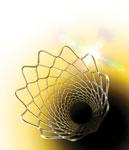
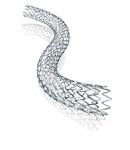
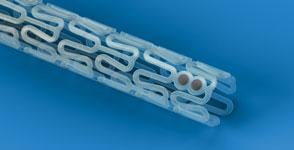

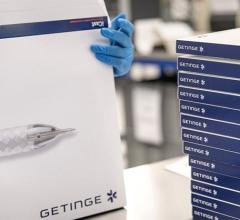
 April 17, 2024
April 17, 2024 

